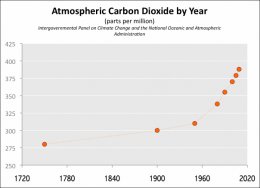Difference between global warming and climate change
 WHAT IS THE DIFFERENCE BETWEEN CLIMATE CHANGE AND GLOBAL WARMING?
WHAT IS THE DIFFERENCE BETWEEN CLIMATE CHANGE AND GLOBAL WARMING?
Climate change is the shift in long-term, global weather patterns due to human action; it’s not exclusive to warming or cooling.
Climate change includes any change resulting from different factors, like deforestation or an increase in greenhouse gases. Global warming is one type of climate change, and it refers to the increasing temperature of the surface of Earth. According to NASA, the term global warming gained popular use after geochemist Wallace Broecker published a 1975 paper titled Climatic Change: Are We on the Brink of a Pronounced Global Warming?
Since 1880, the average surface temperature of the Earth has increased by roughly 0.9 degrees Fahrenheit, but the rate it’s increasing is faster than that, depending on which region you live in. If you’re closer to the equator, temperatures are increasing more slowly. The fastest increase in temperatures in the United States is in Alaska, where average temperatures have been increases by more than 3 degrees Fahrenheit per century. For a graph of average global temperatures by year, see the NASA website .
HOW GREENHOUSE GASES RELATE TO CLIMATE CHANGE
Greenhouse gases are those thought to contribute to the greenhouse effect, an overall warming of the Earth as atmospheric gases trap electromagnetic radiation from the sun that would otherwise have been reflected back out into space.
Noteworthy greenhouse gases are methane, nitrous oxide, carbon dioxide, hydrofluorocarbons (HFCs), perfluorocarbons (PFCs), and sulfur hexafluoride (SF6). These gases are thought to affect the climate directly and indirectly, even though they constitute only a small fraction of the blanket of gases that make up the atmosphere.
Currently, the composition of the atmosphere is mostly nitrogen and oxygen, with just 0.033 percent carbon dioxide and all other gases accounting for even less.
WHICH GASES CONTRIBUTE THE MOST?
According to 2010 models cited by NASA, 20 percent of the greenhouse effect is attributed directly to carbon dioxide and 5 percent to all other greenhouse gases. The remaining 75 percent of the greenhouse effect is thought to be due to water vapor and clouds, which are naturally-occurring. However, even though carbon dioxide and the other greenhouse gases are such a small percentage of the total gas in the atmosphere, they affect when, where and how clouds form, so greenhouse gases have some relevance when it comes to 100 percent of the greenhouse effect. Carbon dioxide is thought to modulate the overall climate, like a atmospheric thermostat.
- Play mines online


|
What is climate change? Incompatibility between the definitions used by science and policy organizations is an obstacle to effective action.: An article from: Issues in Science and Technology Book (Thomson Gale) |